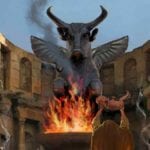 Weird Stuff
Weird Stuff  Weird Stuff
Weird Stuff  Mysteries
Mysteries 10 Tragic Disappearances and Deaths in Joshua Tree National Park
 History
History 10 Ways Childhood Really Sucked in the Old West
 Music
Music 10 Name Origins of Famous Bands from the 1990s
 Religion
Religion 10 Biggest Turnarounds by the Catholic Church
 Weird Stuff
Weird Stuff 10 Unbelievable Times Laws Had Unintended Consequences
 Humans
Humans Ten Historic Women Who Deserve Way More Credit Than They Got
 Movies and TV
Movies and TV 10 Films That Spawned Major Lawsuits
 History
History Ten Times Towns Were Wiped Off the Face of the Earth
 Creepy
Creepy 10 of the Most Disturbingly Haunted Public Houses in the UK
 Weird Stuff
Weird Stuff 10 Niche Subcultures That Are More Popular Than You Might Think
 Mysteries
Mysteries 10 Tragic Disappearances and Deaths in Joshua Tree National Park
 History
History 10 Ways Childhood Really Sucked in the Old West
Who's Behind Listverse?

Jamie Frater
Head Editor
Jamie founded Listverse due to an insatiable desire to share fascinating, obscure, and bizarre facts. He has been a guest speaker on numerous national radio and television stations and is a five time published author.
More About Us Music
Music 10 Name Origins of Famous Bands from the 1990s
 Religion
Religion 10 Biggest Turnarounds by the Catholic Church
 Weird Stuff
Weird Stuff 10 Unbelievable Times Laws Had Unintended Consequences
 Humans
Humans Ten Historic Women Who Deserve Way More Credit Than They Got
 Movies and TV
Movies and TV 10 Films That Spawned Major Lawsuits
 History
History Ten Times Towns Were Wiped Off the Face of the Earth
 Creepy
Creepy 10 of the Most Disturbingly Haunted Public Houses in the UK
10 Of History’s Most Terrifying And Brutal Pirates
Commonly known pirates like Blackbeard and Calico Jack tend to take the spotlight. However, some of these lesser-known but equally terrifying masters of the sea made their permanent mark in maritime history and deserve recognition as well.
10 Sadie The Goat

Sadie Farrell was a gang leader from New York who was known for headbutting male victims in the stomach and then robbing them blind. Although she began her life of crime with petty thievery, she was inspired to become a pirate while witnessing the botched robbery of a sloop by the Charlton Street Gang. Farrell jumped to the aid of the gang and successfully led the takeover of a much larger ship within a few days.
Farrell’s crew was known for their vulgarity and recklessness—openly sailing up and down the Hudson and Harlem Rivers to rob other ships, raid villages, and kidnap people for ransom. Along with reputedly making prisoners “walk the plank,” Sadie the Goat was known for wearing an ear around her neck, a trophy that had been bitten off a rival gangster during a fight.
Farrell’s vicious crew continued their raids for several months before local farmers banded together in strong enough numbers to fight them off. Although Farrell was forced to return to life on land, she was known forever afterward as the “Queen of the Waterfront.”
9 Francois L’Olonnais

During the 1600s, Francois l’Olonnais was born in France as Jean-David Nau to poor parents who were forced to place him into indentured servitude. Once his servitude was complete, he ultimately traveled to Saint-Domingue (modern-day Haiti). L’Olonnais was at home in the rowdy colonial settlement and became a buccaneer, targeting ships with goods coming from Spain and the West Indies.
After a shipwreck in which his crew was attacked and nearly destroyed by Spanish soldiers, l’Olonnais swore revenge. He led the remainder of his men to the island of Tortuga where they raided and ransacked the town, destroying an entire rescue crew sent by the governor of Havana. L’Olonnais spared only one sailor, a witness to tell the horrid tale.
Renowned for his cruelty, l’Olonnais enjoyed torturing prisoners. A couple of his favorite methods were slicing off portions of prisoners’ flesh with his sword and “woolding,” a process in which a rope was tightened around a person’s head until his eyes popped out.
While escaping an attack by Spanish soldiers, l’Olonnais ran his damaged ship aground on the coast of Panama. When he and his crew set out to find food and supplies, they were captured by the native Kuna tribe. This proved to be the end of the fearsome l’Olonnais. The Kuna were cannibals and devoured both him and his crew.
8 Nicholas Brown
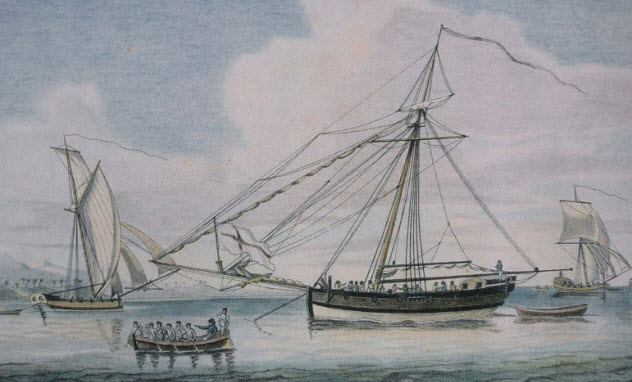
Nicholas Brown, known by his contemporaries as “The Grand Pirate,” was an English pirate who operated off the coast of Jamaica in the early 18th century. Little is known about his early life, but he made a name for himself in the Americas by raiding and pillaging English, Portuguese, and Spanish ships. Eventually, he was offered a royal pardon in the hopes of bringing a stop to his savage pirating.
Initially, Brown accepted the pardon. But he soon grew bored with life on the straight and narrow and returned to life as a pirate. Enraged, the Jamaican government placed a £500 bounty on his head.
Brown had a childhood friend and naval rival named John Drudge who took this bounty quite literally. He pursued Brown and killed him. After Brown’s death, Drudge beheaded his old friend, pickled the head in a keg of rum, and returned to Jamaica to claim his prize.
7 The Victual Brothers

The Victual Brothers were a squadron of German mercenaries hired by King Albert of Sweden to fight against Denmark during the 14th century. Instead of robbing and ransacking foreign ships for the Crown, however, the guild quickly became the Robin Hood of the Baltic Sea, plundering rich merchant ships to feed the hungry and provide for the poor.
During the siege of Stockholm by Danish Queen Margaret, the Victual Brothers led a daring attack and broke through the enemy’s blockade to deliver food, supplies, and military relief to the city’s inhabitants.
Afterward, the guild set up a permanent camp on Gotland Island and preyed the icy waters. They attacked any unfortunate ships that they encountered, causing such terror among merchant and government vessels that trade on the Baltic Sea came to a virtual standstill.
In response, King Albert and Queen Margaret temporarily united forces to oust the Victual Brothers. In 1400, the royal forces successfully captured Klaus Stortebeker, one of the guild’s primary leaders, and sent him to trial in Hamburg.
Stortebeker, along with many of his crew members, was beheaded. Afterward, it only took a short time for the Danish and Swedish governments to dismantle and destroy the remaining members of the Victual Brotherhood.
6 Edward Jordan

Edward Jordan’s short but ruthless career as a pirate began in Ireland as a rebel fighting the British Crown. In 1798, he was captured and sentenced to hang. He escaped, was captured again, and finally slipped the noose by trading valuable rebel secrets in exchange for a king’s pardon. When the Irish discovered his treachery, he fled to America to make a new life as a fisherman.
Jordan settled in Gaspe and took out a loan to buy a schooner named Three Sisters. However, he was unable to repay his significant debt. In 1809, Jordan’s creditor sent Captain Stairs to seize the Three Sisters in exchange for payment.
Initially, Jordan appeared to go along with the punishment. He even requested that he and his family be given passage on the schooner so that he could find new employment.
But once the Three Sisters hit open water, Jordan pulled a pistol and attempted to shoot Stairs. Jordan missed and killed the first mate instead. Meanwhile, Stairs escaped by jumping overboard. Rather than risk going back, Jordan took control of the schooner and set a course toward Newfoundland. He planned to hire a crew and flee to Ireland.
But Jordan’s reckless plan didn’t work. A passing ship rescued Captain Stairs, and a search party was immediately sent out for the Three Sisters. The promised reward was £100 for the capture of “Pirate Jordan.”
The schooner and everyone aboard was captured just off the coast of Newfoundland. Jordan was tried and sentenced to hang. Afterward, his body was tarred and hung in chains in the harbor as a warning to all passing mariners.
5 Edward Low
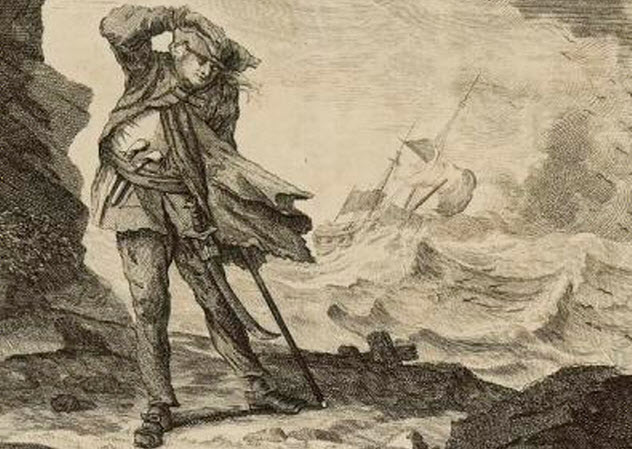
Edward Low was born in London to an impoverished family and began thieving as a young boy. After an early marriage, he and his wife moved to America to pursue better prospects in the New World. But his wife died in childbirth, and Low quickly returned to his old habits. He became a pirate after leading a mutiny on a sloop headed to Honduras where he was working as a rigger.
Unlike many pirates, Low preferred to keep a small fleet of only three or four vessels. After capturing and looting a ship, he viciously tortured the sailors before burning the vessel and leaving it behind. Philip Aston, a member of Low’s crew, later said, “Of all the piratical crews that were ever heard of, none of the English name came up to this in barbarity.”
Low was known to tie a victim’s hands behind his back and place rope between each of the fingers. Then Low would set the bindings on fire and watch the flames go through the rope and burn the victim’s flesh to the bone.
Low was also renowned for brutally beating and slashing prisoners with his cutlass. After capturing the Portuguese ship Nostra Signiora de Victoria, he cut off the captain’s lips with the cutlass. Then Low broiled and force-fed them to the captain.
This heinous cruelty, along with Low’s reckless battle tactics, made him the most feared pirate during the early 1700s. Although no one really knows how Low met his end, there are many different theories. Some believe that his ship sank during a storm off the coast of Brazil. Some say that he died in a mutiny. Others believe that he was captured by the French and hanged in Martinique.
4 Black Caesar
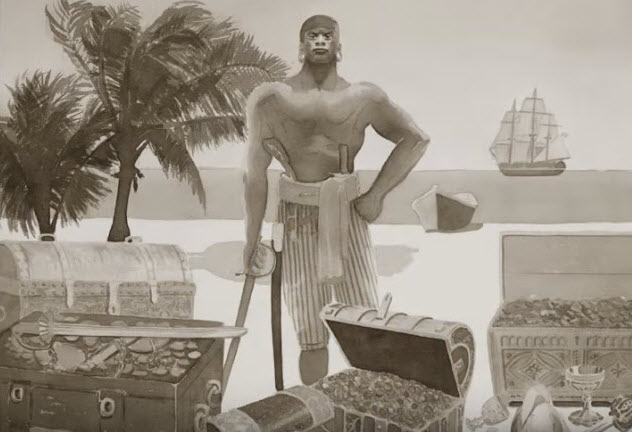
Known for his stature and strength, Black Caesar is believed to have been a chieftain in Africa before being captured and brought to America as a slave. After the slave ship wrecked off the coast of Florida, Black Caesar and another slave stole a longboat and a few supplies and escaped the sinking vessel.
Posing as shipwrecked sailors, he and his companion flagged down passing ships and asked for their assistance. When they were close enough to the men, they held the sailors at gunpoint and demanded food, supplies, and any other valuable items. Black Caesar collected a small fortune that he buried on Elliot Key.
After a few years, Black Caesar grew his operation by capturing a larger ship and adding a crew of pirates so that he could sail into deeper waters. He continued to frequent the Florida Keys, however, and devised a clever method of using rope and a metal ring embedded in stone to heel his entire boat over. This would hide it beneath the water to avoid detection by coast patrols.
In the early 18th century, Black Caesar joined Blackbeard’s crew as a lieutenant on the Queen Anne’s Revenge. Shortly after Blackbeard’s death, Black Caesar was taken prisoner by Virginia authorities and sentenced to death by hanging. Although none of his famous treasure has ever been found on Elliot Key, many piracy fans and treasure hunters continue to search for it today.
3 Henry Every
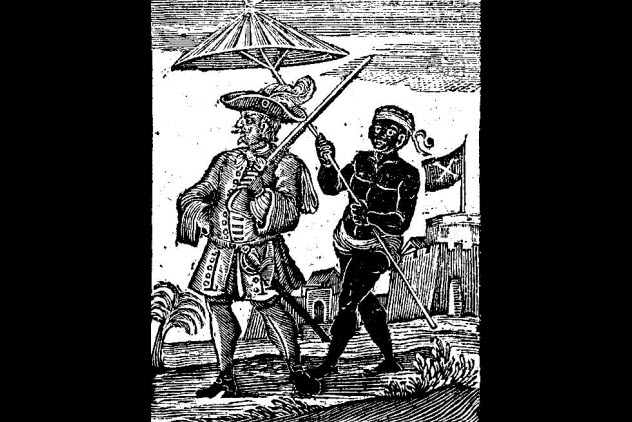
Henry Every, known as “Long Ben” or “The King of Pirates,” led the most profitable pirate raid in history—worth an estimated $78 million by today’s standards—and then vanished into thin air.
He began his life at sea as a member of Britain’s Royal Navy, serving during the Nine Years’ War. After the war ended, Every worked as a mariner on the Charles II, which was deployed in the West Indies to capture French vessels. After a slow season, however, the crew became restless and mutinied.
Every was made captain, and he renamed the mutinied ship the Fancy. He was renowned for his mastery of ambush tactics as well as the ability to easily maneuver his ship through traps and difficult waters. After successfully pillaging several English and Danish ships, Every set sail for the island of Perim after hearing that a large Indian fleet would soon pass by.
The Fancy joined ringleader pirate Thomas Tew and several local pirating crews to intercept the convoy of 25 Indian ships. During the battle, Tew died. Several of the other pirate ships were too slow to keep up with the Indian fleet. Unfazed, Every chased the two largest of the ambushed ships.
After overtaking both, Every collected his treasure and allowed his crew to rape, pillage, and torture to their hearts’ content. Then he headed across the Atlantic to escape the manhunt ordered by the East India Trading Company. He briefly anchored off the coast of Nassau before embarking on his final escape. After departing from the Bahamas, Every, his crew, and his astounding treasure were never seen again.
2 Bartholomew Roberts
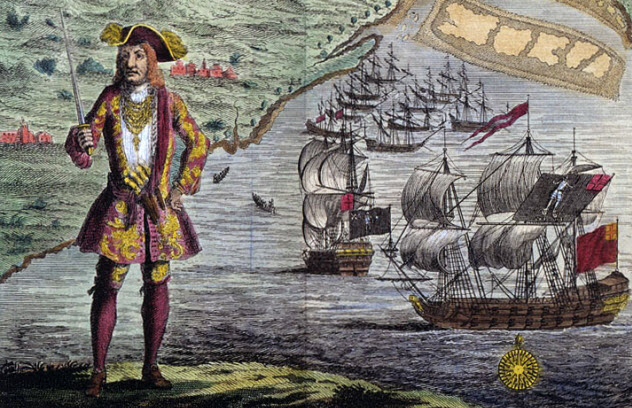
With over 400 vessels captured during his illustrious career, Bartholomew Roberts was one of the most successful pirates in history. In 1719, he was working aboard the slave ship Princess when it was captured by pirates off the coast of West Africa. Roberts was quickly brought onto the pirate crew when they discovered his keen abilities as a navigator.
He rose speedily through the ranks and was chosen to lead the crew after their captain died in battle. The Royal Fortune ruthlessly pursued any ship it came upon and captured much larger and better-equipped British, Portuguese, and Spanish military vessels. Known as “Black Bart,” Roberts built his reputation on his fearlessness in battle and his ruthless treatment of prisoners.
Black Bart’s approach to the victims of his raids was simple and cold-blooded. For example, after capturing a slave vessel with 80 chained Africans aboard, he burned the entire ship without bothering to unshackle the prisoners.
Similarly, after getting into a feud with the governor of Martinique, Roberts boarded a ship while the governor was on board, killed him, and then proceeded to hang the body from the Royal Fortune’s yardarm for months.
In the winter of 1722, Black Bart was finally overtaken by the English ship HMS Swallow. In his characteristically brazen fashion, Roberts took on the larger ship. But this time, he was brutally killed when grapeshot hit him in the throat.
Dismayed and shocked at the death of their captain, his crew tossed Roberts’s body overboard in accordance with his wishes. Though the members of the HMS Swallow searched desperately for proof of their kill, Roberts’s body was never recovered.
1 Stenka Razin
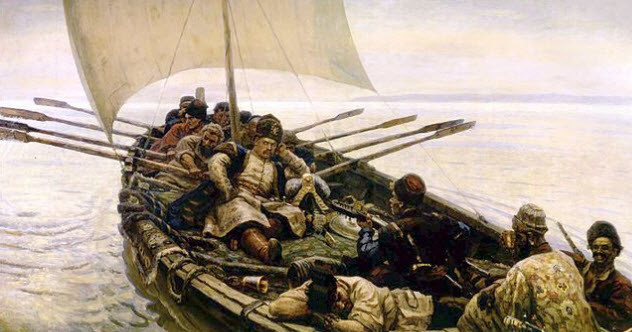
Stenka Razin, a Cossack rebel fighter and pirate in the mid-1600s, continues to be a beloved folk hero in Russia to this day. Traditionally, the Cossacks were given some autonomy by the Russian government. However, in the early 1600s, that began to change.
The Russian government exerted more control over the Cossacks, often doling out harsh punishments and collecting taxes. Stenka Razin had been a longtime community leader, but after his brother was executed by Russian troops, Stenka swore revenge.
He led 1,000 Don Cossacks to the Volga River and captured a large number of the tsar’s ships. Under his authority, the Cossacks sailed up and down the Volga, pillaging trading vessels and releasing political prisoners.
Razin’s actions made him a peasant hero and inspired uprisings all across Russia. Many believed that he could not be defeated. Once his army grew to over 2,000 Cossacks, Razin expanded his operations to the Caspian Sea and the coast of Persia.
In 1671, Razin planned a daring capture of the city of Simbirsk but was betrayed by his own soldiers. The defeated pirate was taken to Moscow, brutally tortured for four days, and executed. Even though their leader was dead, Cossack rebels continued to fight against the Russian tyrants and remembered Razin’s leadership through stories and song.
Alyssa Howard is a freelance writer and history fanatic. You can see her work at www.kitfoxsociety.wordpress.com.




